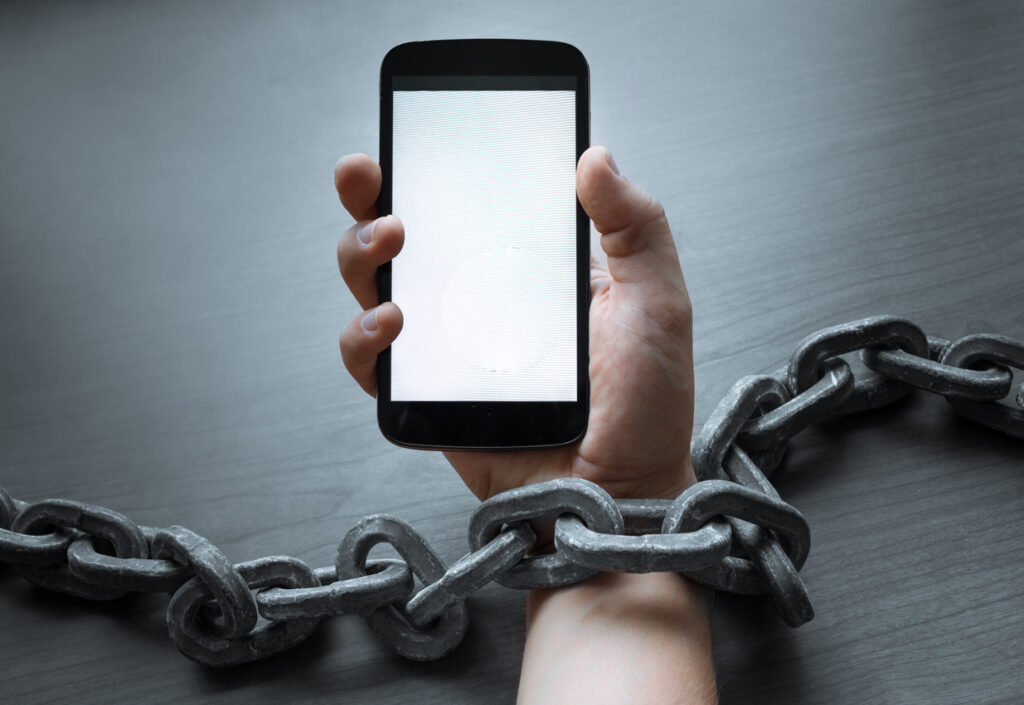In today’s world, digital technology is everywhere and within a relatively short time it has become embedded in our social fabric.
Such is the speed of technological change that its absorption into our day-to-day lives has occurred very rapidly, but without the research into its impact that precedes the introduction of medical interventions.
As a consequence, its wider effects are only now becoming apparent, especially with regard to how it affects us, physically, psychologically and in terms of our overall wellbeing.
The benefits at home and at work are huge and incontestable, but there is a growing body of evidence that the impact of digital devices may not be entirely benign.
It’s leading many to conclude that we need to recalibrate our relationship with the technology, to ensure that we realise its benefits without that being at the expense of our health and wellbeing.
This argument is beginning to carry weight in the workplace where there is a growing recognition that the unconstrained use of technology may be undermining performance and productivity, as well as harming the wellbeing of the workforce.
The impact of digital technology on productivity
The prevalence of smartphones and email mean that employees are subject to a constant stream of interruptions.
Notifications alerting us to the arrival of new emails or other content distract us, making it difficult to attain the state of flow that is required to carry out complex or analytical tasks.
Studies have found that digital technology impacts us in a variety of other ways that are unhelpful in the workplace.
There is evidence that digital technology has further blurred the home/work boundaries.
It reduces our capacity for focus and concentration, our ability to comprehend and digest complex content and it encourages us to multitask, a pervasive workplace practice, that research tells us the brain can’t effectively undertake.
We’re also subject to ‘the Google effect’ through which we become less adept at remembering information because we’ve subconsciously delegated that responsibility to technology.
These all have implications for performance and productivity at work, and that is reason enough for businesses to be worried.
Digital technology and the employee wellbeing agenda
Given that most businesses now prioritise the employee wellbeing agenda, however, there are additional reasons for concern.
Excessive or indiscriminate use of digital technology is impacting on the quantity and quality of sleep employees are getting, as well as contributing to the national obesity crisis.
Finally, there is evidence that digital technology has further blurred the home/work boundaries, with one study finding that 61% of managers felt the technology made it difficult to switch off from work.
Faced with the expanding evidence base, and in the absence of clear public policy guidelines from government, businesses have taken a lead on addressing digital overload.
A 2018 Economist report on workplace wellbeing programmes surveyed 500 senior HR executives from global organisations about their wellbeing priorities.
Around 70% of respondents felt that initiatives that focus on the impact of digital consumption were important, as were polices that promote digital wellbeing.
Significantly, over 50% of the businesses felt they had implemented such measures well, or very well.
Examples of corporate intervention to prevent digital overload
Some companies have taken steps to reduce the intrusion of emails into employees’ working lives.
Among the first to act on email overload was Volkswagen, when in 2012 they turned off email outside working hours.
In 2014 Daimler in Germany arranged for emails to be automatically deleted when employees were on holiday. The sender receives a message inviting them to find an alternative recipient of the email, leaving the employee to return from holiday to an empty inbox.
Other companies that have acted on email include BMW and AXA.
There is no one-size-fits-all solution – it’s important to be flexible and to adapt recommendations to the demands of each employee’s role and the dynamics of their working relationships.
In 2017 France introduced a right to disconnect, with companies instructed to set out the hours when staff shouldn’t send or respond to emails.
Other companies have moved beyond addressing the email flow. Telenor, the Scandinavian telecoms company introduced ‘workfulness’, a programme built around ideas from neuroscience centering on decision-making.
It operates on the principle that to function effectively at work, the rational brain needs to gain precedence over the impulsive brain.
It focuses on eliminating distractions and incorporates strategies of disconnection for employees. These include tech free meetings and email–free working hours. It also includes disabling pop ups and notifications on smartphones and computers.
[cm_form form_id=’cm_65a14c3f5da64′]
Digital detox
Global legal practice Eversheds Sutherland initiated another innovative approach. The firm grew concerned that digital technology could be driving an ‘always on’ culture that could have an adverse effect on employee wellbeing.
They found that a significant amount of employee time was spent checking devices and managing emails.
It’s about striking a different balance – one that protects employees’ health and wellbeing, limits the intrusion of work into their personal lives.
They also found that employees were struggling to find time for dedicated concentration to engage in deep work, so they took steps to ensure that employees felt that they were in control of the technology rather than it being in control of them.
The firm engaged a digital detox professional to first get to know them as a business and conducted a firm-wide survey around the use and impact of technology.
They also delivered webinars and dedicated team-based sessions to help each employee find ways they could implement small changes to how they used technology.
Employees took the practical hints and tips from the webinars and team-based sessions and implemented them both in work and at home.
An important lesson from this is that there is no one-size fits all solution – it’s important to be flexible and to adapt recommendations to the demands of each employee’s role and the dynamics of their working relationships.
Enough has now been learnt through this approach for Eversheds Sutherland to make firm-wide recommendations to help improve the tech/life balance of its people.
Getting the balance right
These examples and others like them are not about removing or abandoning technology; that is neither desirable nor feasible.
Rather, it’s about striking a different balance – one that protects employees’ health and wellbeing, limits the intrusion of work into their personal lives but also guards against the reduction in performance and productivity for the business.
By achieving this, we create a workplace environment that is good for the digital wellbeing of employees but works for the business too.






